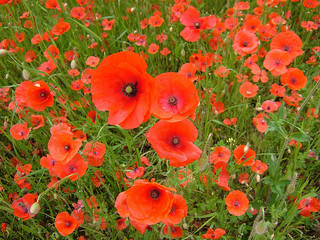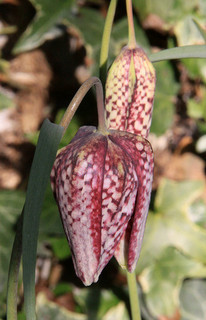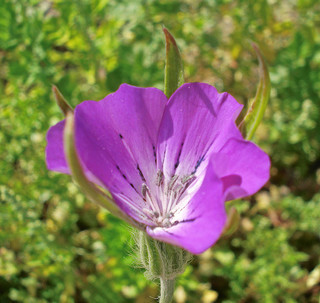Rare Flowers of Meadow and Cornfield

About 5,000 years ago the earliest people in Britain, the Neolithics, began to clear the vast forest which covered most of the country. They used the trees for fuel and the land for cultivation. Then, in 500 BC the Celts arrived and with their more sophisticated agricultural techniques began to create fields for crops and meadows for cattle. These new habitats provided homes for many flowers such as fat hen, good King Henry and black bindweed. When the Romans arrived they probably introduced more cornfield ‘weeds’ such as corn marigold, corncockle and scarlet pimpernel in the supplies of corn which were imported to feed the legions. The fields were once rich with flowers; perfect conditions were created for them by the constantly disturbed and well-fertilised soil of arable land.
However, our agricultural activities have changed over the years. Seed-cleaning and selective weed-killers, designed to kill the ‘weeds’ which compete with the crop, have made some flowers very rare. Even the once common red field poppy and blue cornflower are under threat. Meadowland flowers have also suffered from intensive farming, especially over-grazing. The word meadow actually means a grass field that is not grazed until after the hay is brought in. Rare meadow species include the fritillary, spiked speedwell and meadow saffron.
Here are three examples of our once common flowers:
 Field Poppy Papaver rhoeas
Field Poppy Papaver rhoeas
Poppies were associated with cornfields in ancient times. Ceres, Roman goddess of corn, was depicted wearing a wreath of field poppies.
People once used parts of the poppy to cure various aches and pains.
The flower is a well-known symbol of Remembrance Day; it was growing on the fields of Flanders after the battles of the First World War.
Poppy plants are 20-60cm in height and they flower from May until October.
 Fritillary Fritillaria meleagris
Fritillary Fritillaria meleagris
In the early 20th Century the chequered purple flowers of the fritillary were common in wet meadows, but draining, ploughing and fertilisers have greatly reduced the areas where they can grow.
Magdalen Meadow in Oxford is famous for its profusion of wild snakeshead fritillaries. The owners have never allowed cattle to graze it in spring, but have instead harvested the haycrop in mid-summer. This allows the flowers to grow undisturbed and set seed for the following spring.
The plants are 20-50cm in height and flower in April-May.

Corncockle Agrostemma githago
The flowers of the corncockle have undivided petals and are reddish-purple. It was once a common cornfield weed but the seeds are poisonous to humans in large quantities, and so if they become mixed with corn they lower the quality of the flour. Improved agricultural techniques have made this pretty flower very rare.
The plants are 30-100cm in height and appear June-August.
Things to do:
1. Look up the three examples in an illustrated wild flower book, print the fact sheet, and try to draw the flowers with pencil crayons.
2. Make a list of the other wild flowers mentioned in this topic sheet. Look them up in a book and find out more about them, making your own notes and diagrams.
3. You can help to save these wild flowers from extinction by growing them yourself! Many garden centres now sell seeds or young plants of several of Britain’s native wild flowers, or a mix of wild flower seeds so that you can create your own mini-meadows and beds of cornfield flowers.
Please never dig up wild plants or collect their seeds – this isn’t helping to conserve them and it’s illegal.
Read More: Rare Flowers of the Woodland